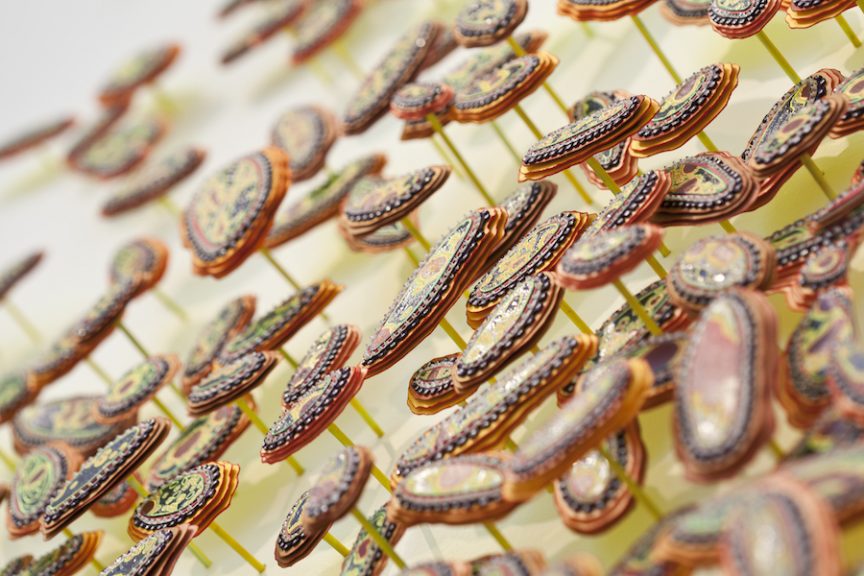Name: Amie Esslinger
Which came first in your life, the science or the art?
Art came first. I grew up in an artist household with two working artist parents and we lived on twenty one acres boxed in by a national forest. I had the encouragement to be creative and the freedom and space to explore the many branches of creek and forest around me. I had access to a generous book collection with tons of reference books on animals and plant life. My first biological sketches came from the Audubon books on sea life. Later, I didn’t think twice about going to art school. Finding interdisciplinary courses that married art practice with environmental studies helped me to fully integrate science into my work.
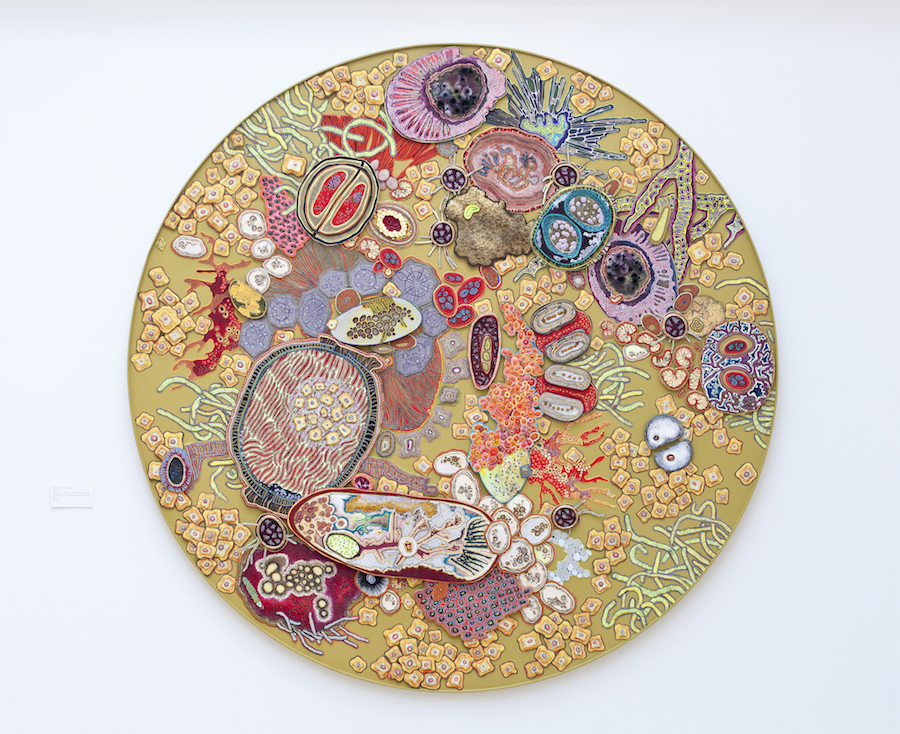
Collisions 1
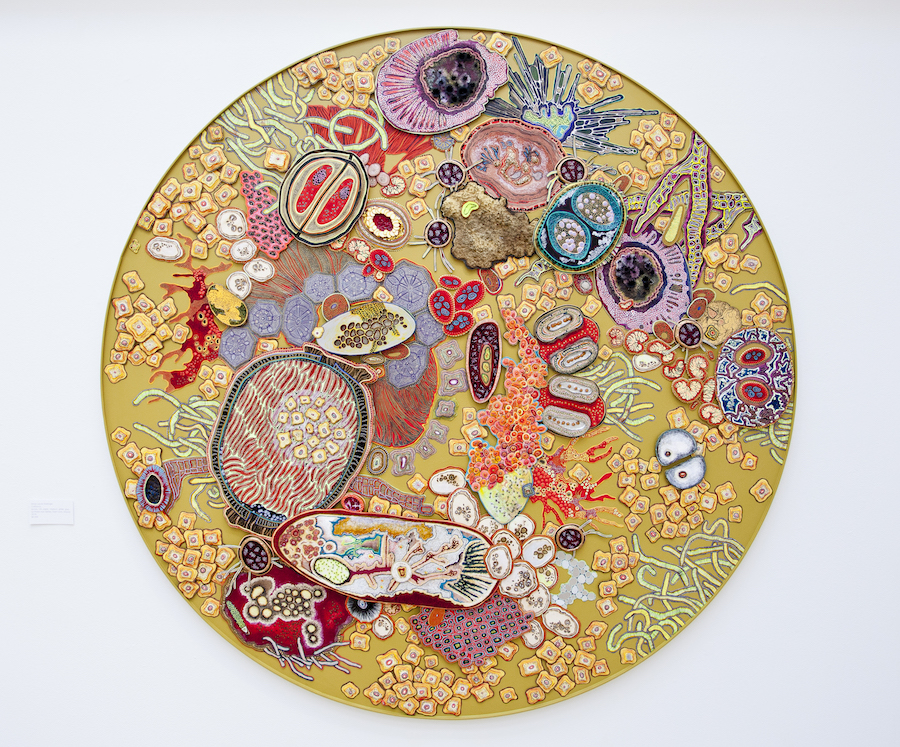
Collisions 2
Which sciences relate to your art practice?
Microbiology has held my interest for some years now. The interactions between pathogens and cellular life are center stage in my current work. I also use anatomy, human and otherwise.
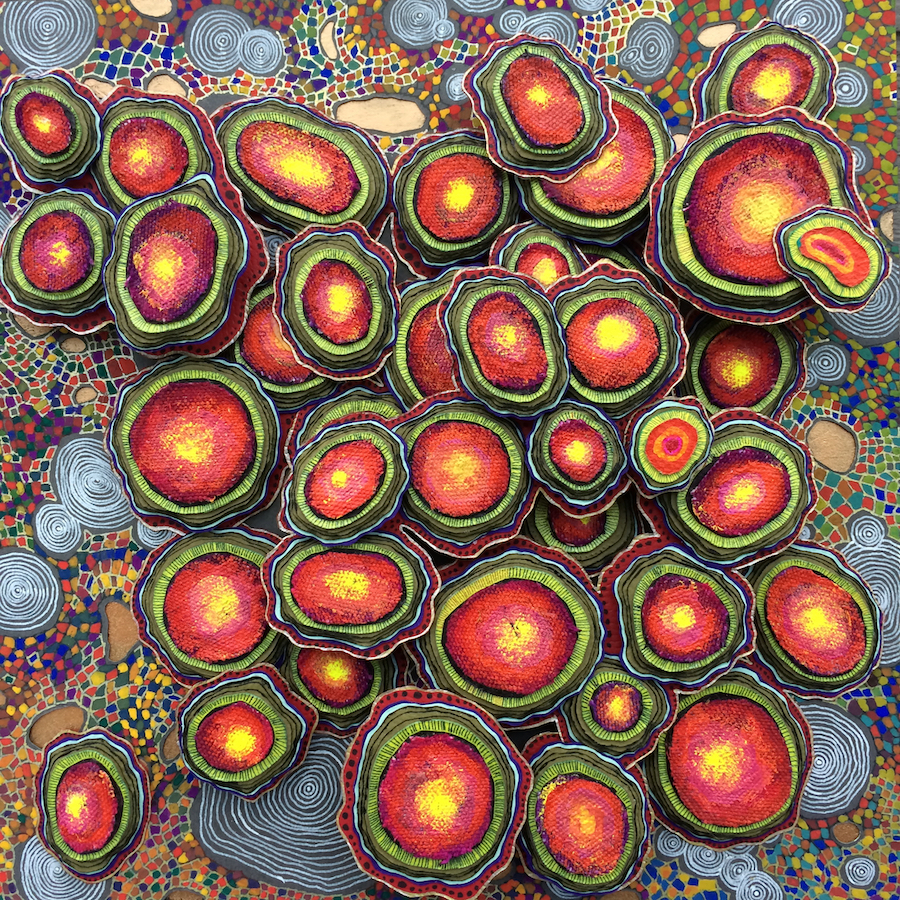
Blood Work
What materials do you use to create your artworks?
I use all sorts of paper, balsa wood, canvas, ink, acrylics, glitter and mediums. My process, in which I cut, stack, glue and paint hundreds of medallions of viruses and cells, requires essential tools like a hobby knife/blades, a set of very sharp scissors, a self-healing board, and a wood burner.
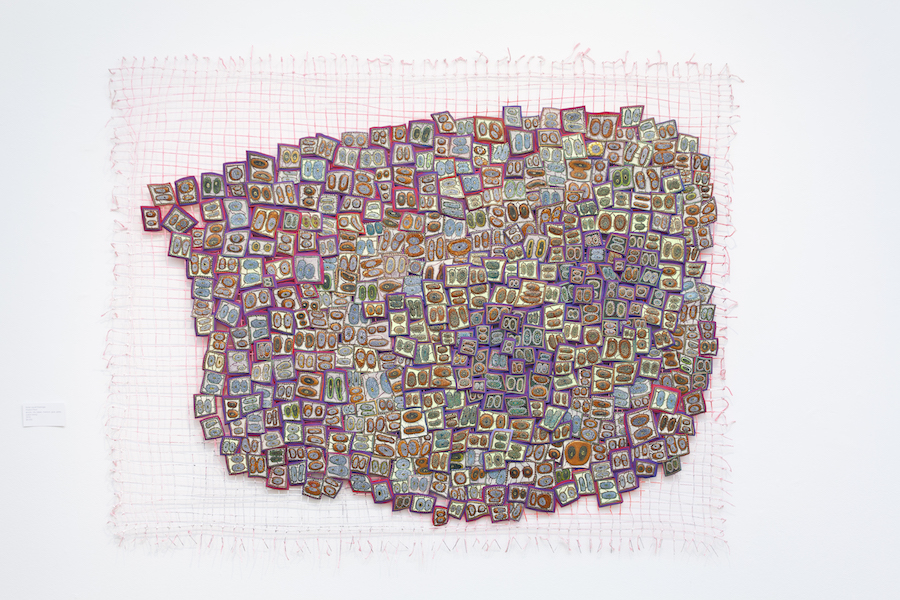
Parent Plant

Parent Plant
Artwork/Exhibition you are most proud of:
I am most proud of my debut show at the Swan Coach House Gallery in Atlanta, Ga. It was a two person show with artist Lauren Peterson and curated by Marianne Lambert, titled Systems. Systems explored how art can decode and create networks based on our natural and social worlds. The piece that I am most proud of is the installation titled Virus Family (Spillover). It is comprised of 523 individual paper medallions, each made from 9 hand-cut, stacked and delicately painted paper pieces mounted on nails. This work reflects both a familial bond between the virus individuals and a turn of events which includes a virus spillover.
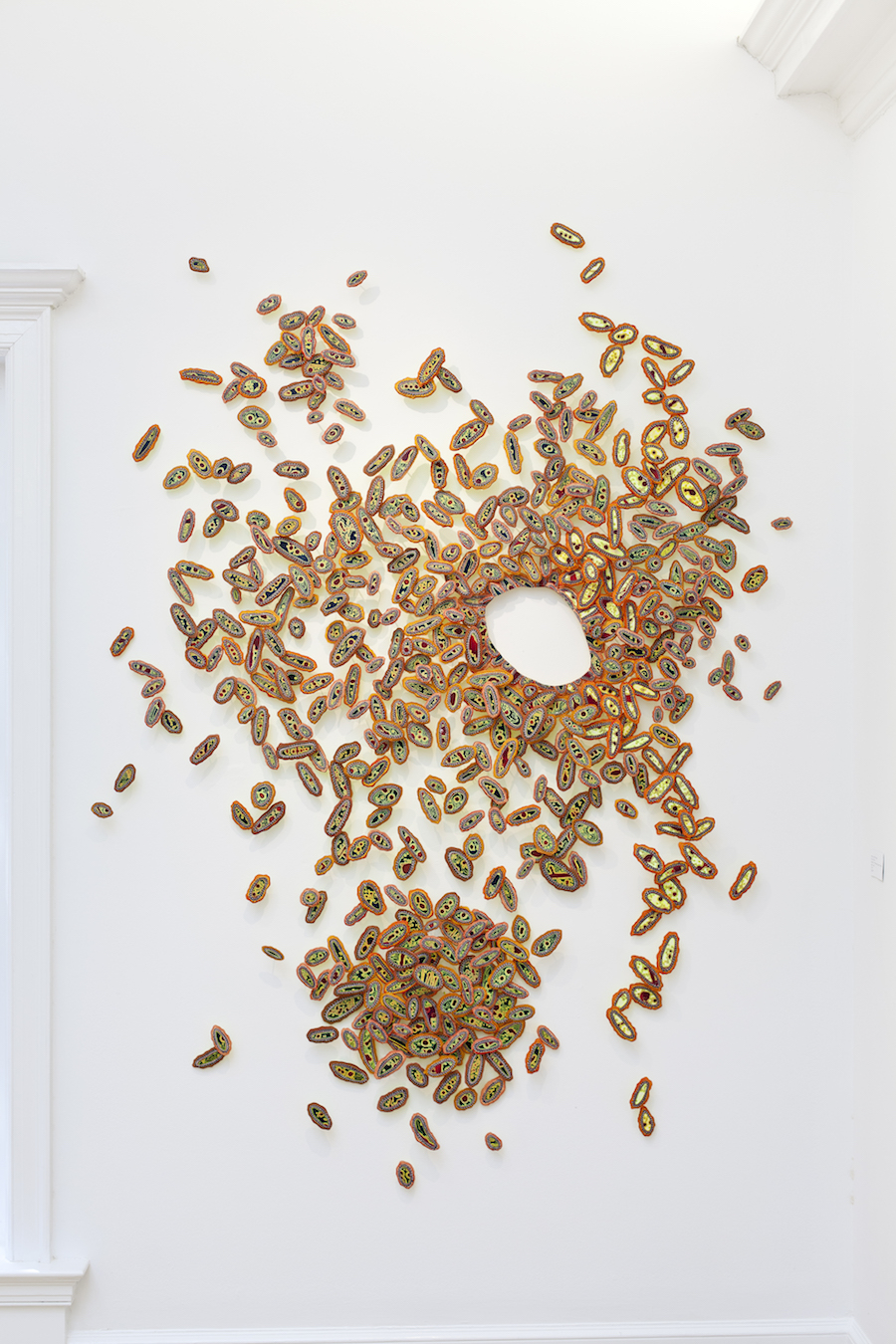
Virus Family
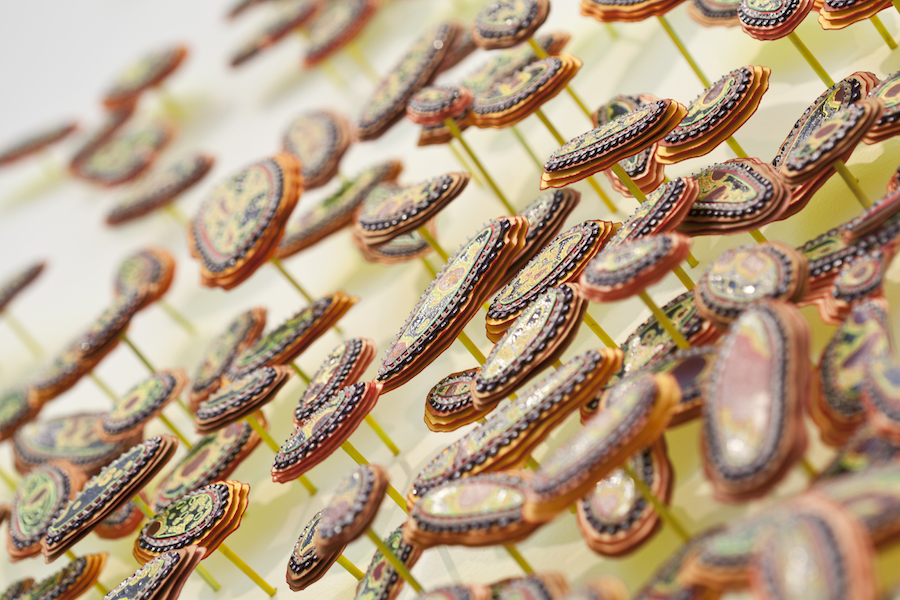
Virus Family
Which scientists and/or artists inspire and/or have influenced you?
The Victorian illustrators that captured and documented animal, mineral and plant specimens and Atlas of Human Anatomy and Surgery by Jean Baptiste Marc Bourgery from the 19th century have been favorites of mine. Scientific illustration is very appealing to me because it serves the duel purpose of scientific documentation and, as a work of art, revealing the sensibility of the illustrator. The Victorians played multiple roles as scientists, collectors and artists, which complicated their relationship with nature. Acquisitions of specimens served as trophies in ostentatious displays, contributing to the demise of the beloved specimen itself.
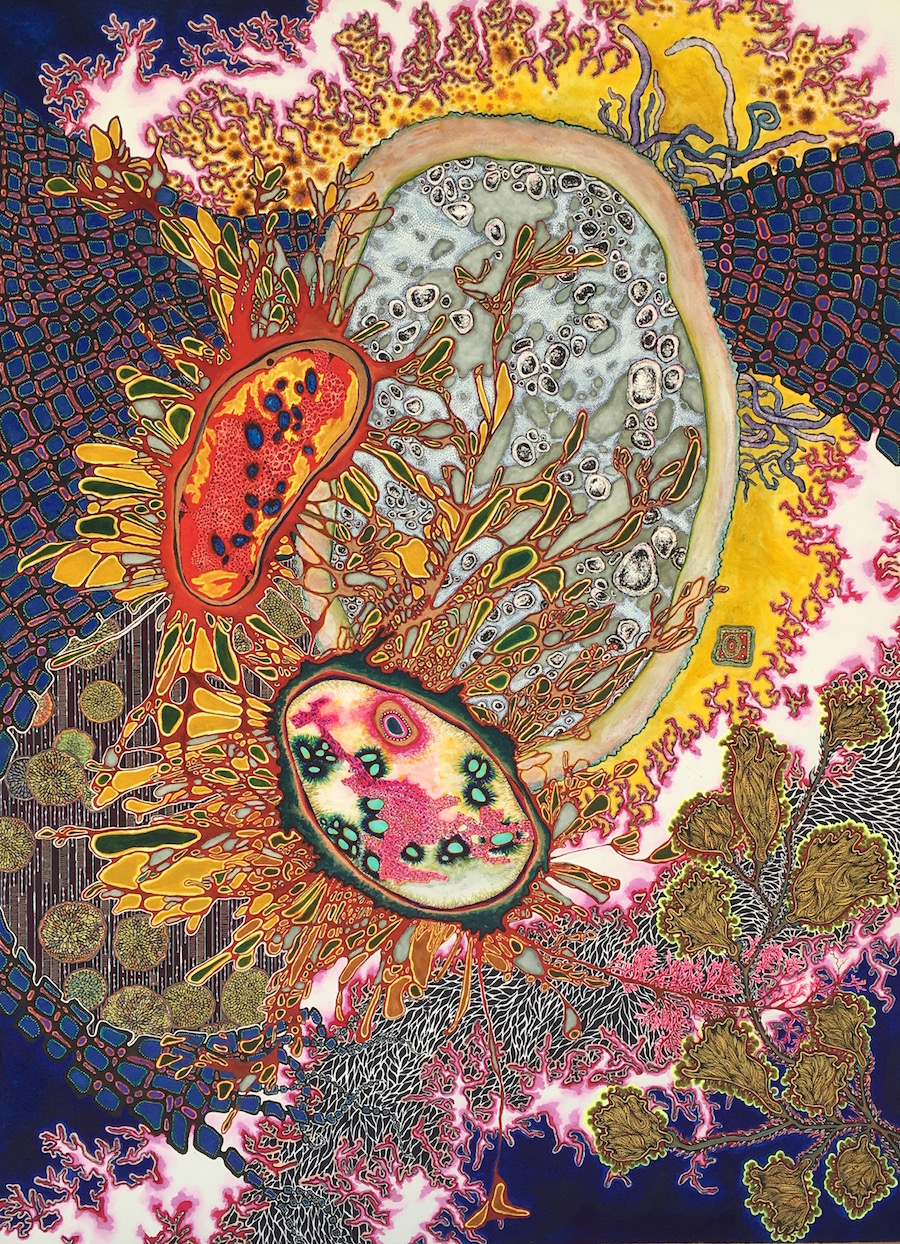
Sibling Protozoa
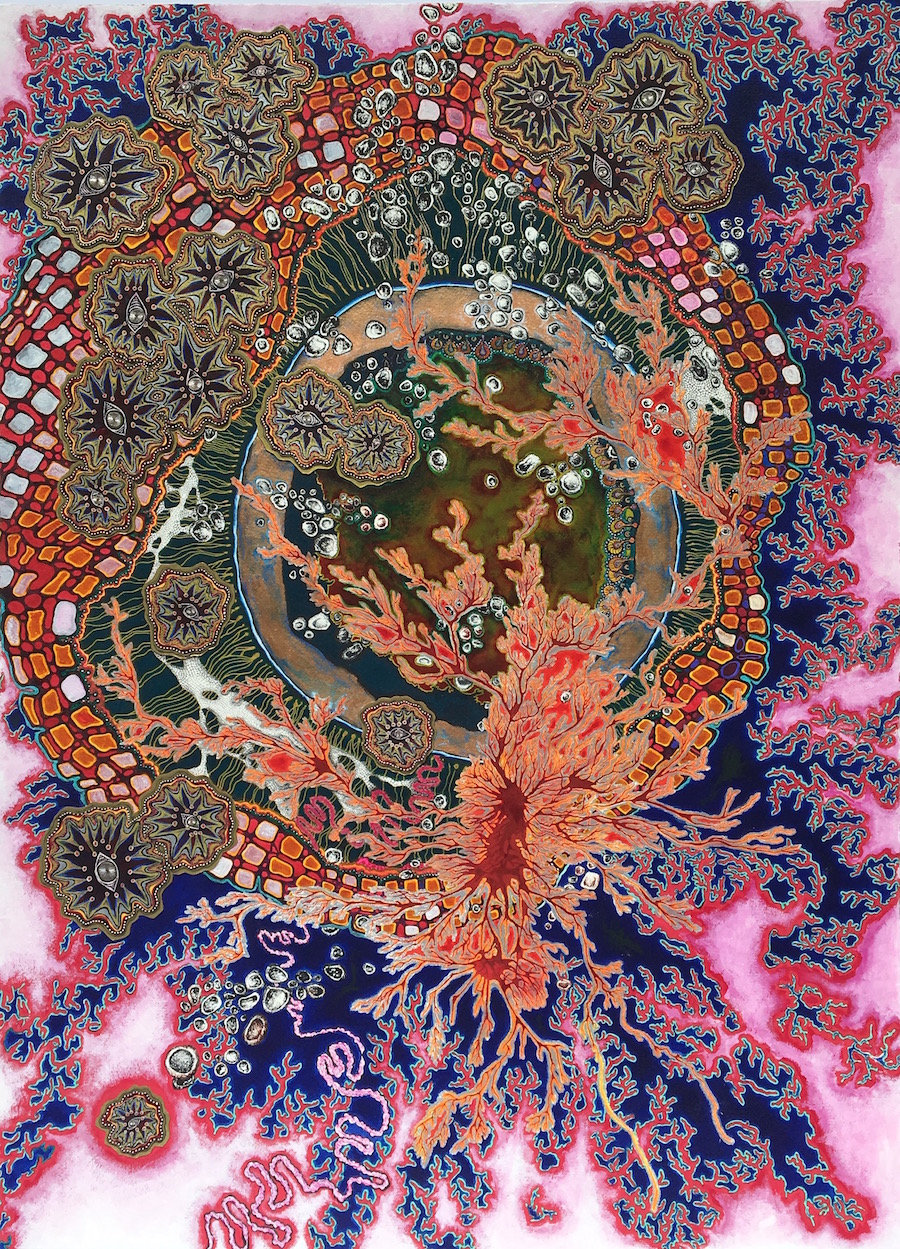
Spores
Is there anything else you want to tell us?
The process of studying nature is a constant tight-rope walk between respecting the natural world and dominating it. In my role as artist, I similarly attempt to reveal hidden intricacies of our objective world, but by doing so, I manipulate the inhabitants of that world, imposing my own subjective order upon it.
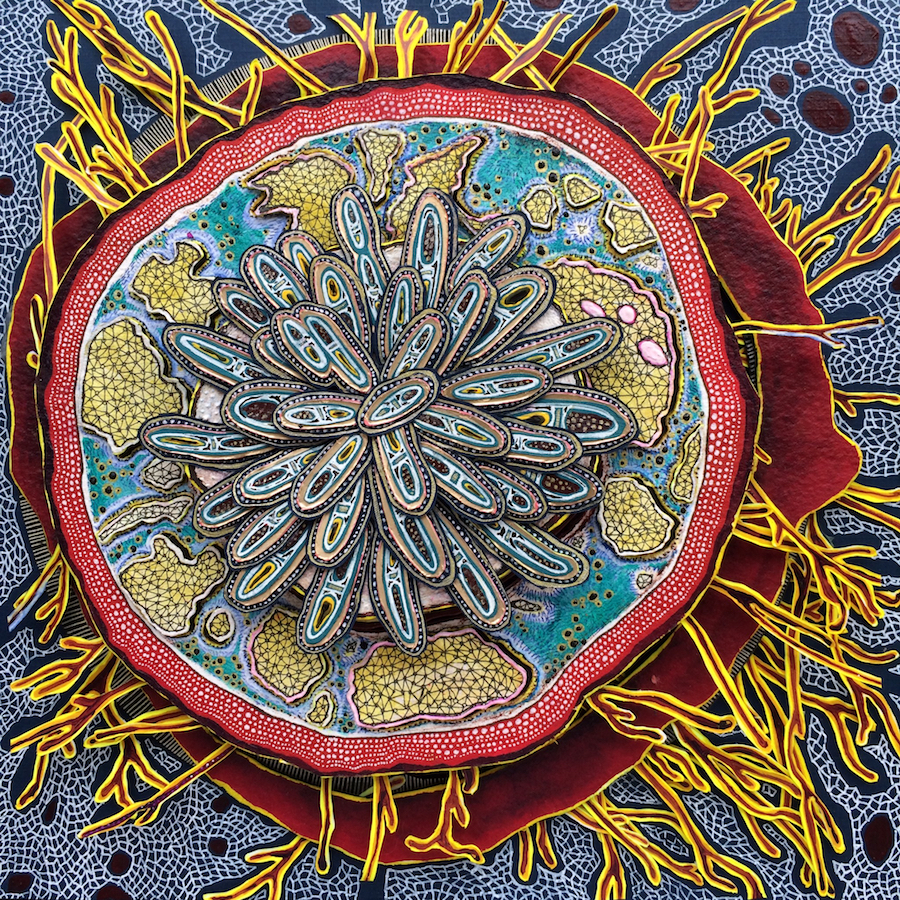
Predetermined Illness

Yellow Virus
Share this Post

